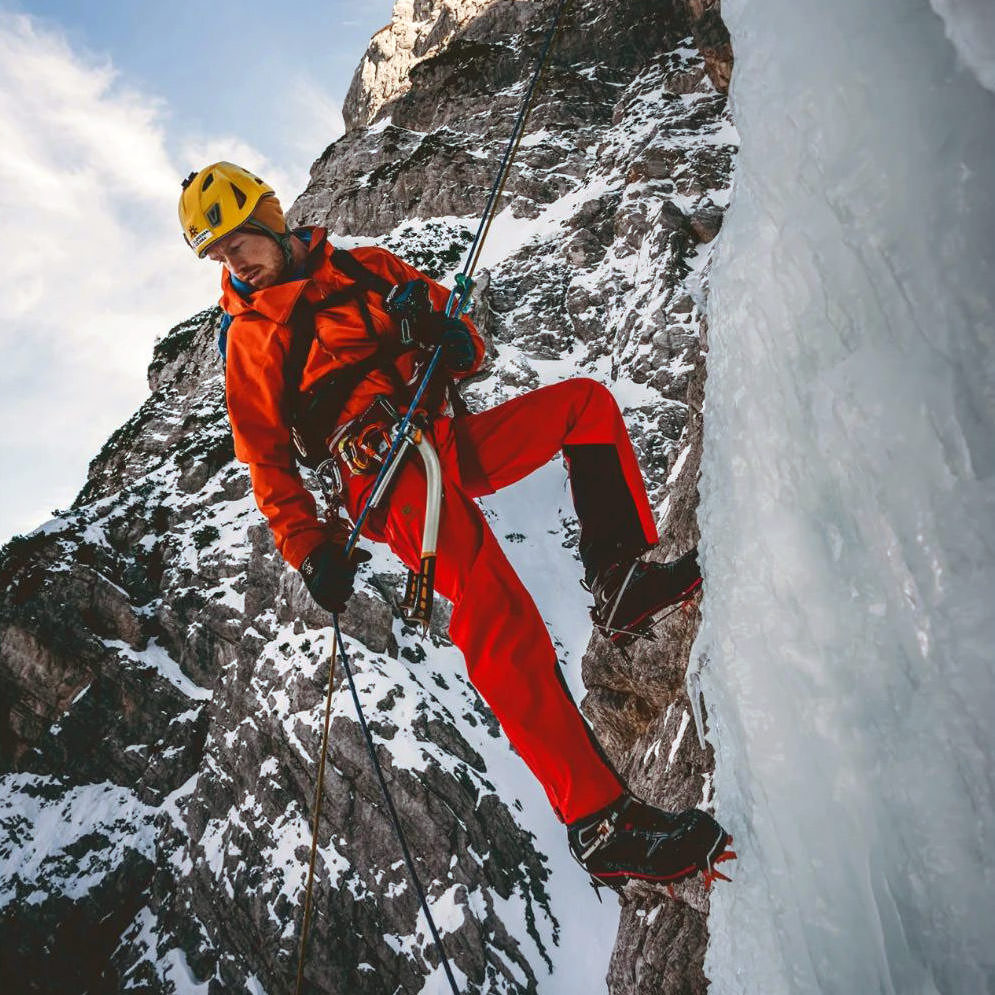
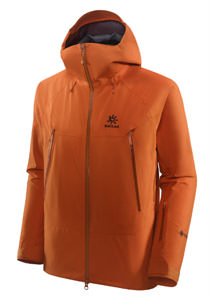
Hard Shell Jacket
Ice climbing, if you want to climb the ice wall without fear of wind and snow, clothing is very important. You'll want to choose a hardshell jacket and pants that are waterproof, windproof, and highly breathable.
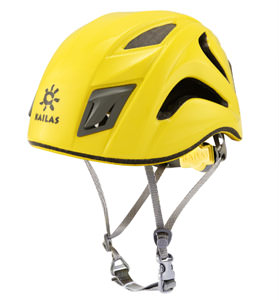
Helmet
During the ice climbing process, there may be risks of falling ice and falling at any time. You want a professional helmet that can act as a buffer to protect the head and cervical spine. A good helmet is lighter and more flexible, especially for the actual situation where ice climbers will subconsciously lower their heads when encountering falling rocks, and strengthen the protection of the back of the head.
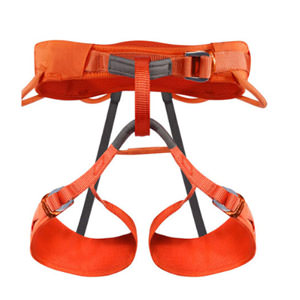
Climbing Belt
The climbing safety belt is the protective equipment that connects the climber with the climbing rope to prevent the loss of protection from the climbing rope in the event of a fall. There are some safety belts designed for technical climbing. In addition to adjustable waist loops, its leg loops can also be adjusted in size, suitable for climbers of all sizes.
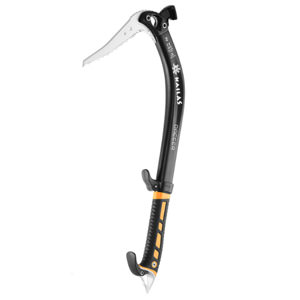
Technical Ice Axe
Different types of ice axes have different functions, such as walking axes, technical ice axes, ice axes designed for climbing steep and difficult routes, etc. It is very important to choose the ice ax that suits you. First, the ice ax should match your climbing project and climbing ability, followed by the feel, and then the weight, and the effect of entering the ice.
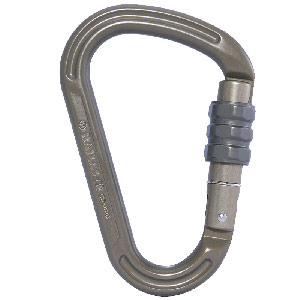
Master Lock
The main lock is safety equipment for ice climbing, it effectively guarantees the safety of ice climbers. It is usually made of aluminum alloy, steel, or stainless steel, and it is indispensable in various outdoor activities. Climbers will usually have at least 5-10 of these to be used at various locations.
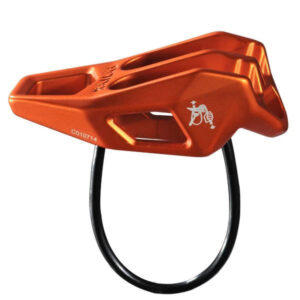
ROPE PROTECTOR
It is mainly used in rock climbing, ice climbing, mountaineering, and rescue activities to protect climbers or descend short distances. The cushioning effect is enhanced by increasing the friction force on the rope to achieve the purpose of "slow descent".
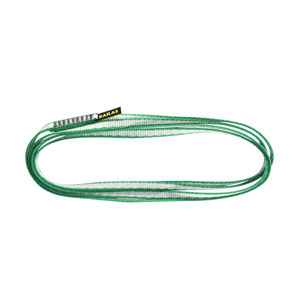
WEBBING SLING
Webbing slings or loops are used to attach quickdraws, carabiners, and ascenders. The sling is in direct contact with the protection fulcrum to reduce the wear and tear of the rope. The flat belt has high tensile strength and wear resistance. It enhances the safety factor of the protection system.
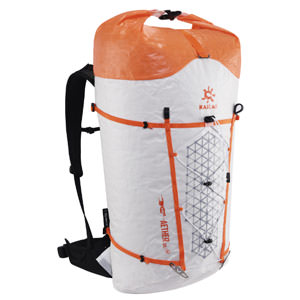
TECHNICAL PACK
Often we need to hike a certain distance before we reach the ice wall, and the technical climbing backpack effectively helps us carry technical climbing equipment such as ice axes, crampons, ropes, and alpine boots.
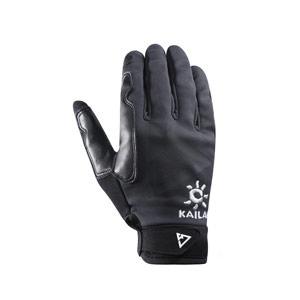
ICE GLOVES
The ice is a cold environment, so waterproof and warm gloves are very important. Good ice climbing gloves are very close to the hand and the fingers can be in a natural relaxed state. The wear resistance and anti-slip highlight its comfort and professionalism.
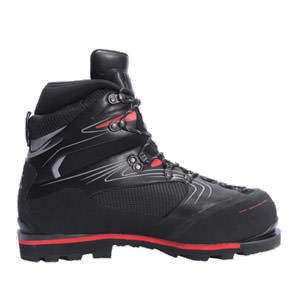
CLIMBING BOOTS
Compared with ordinary hiking shoes, mountain boots are harder and warmer. The soles of alpine boots are hard and have special slots for crampons. Cooperating with crampons is essential equipment for struggling to climb on steep ice walls. The common problem of imported alpine boots is that the soles of the feet are narrow and the arches are low, which is very oppressive to the shape of Asian feet and is very uncomfortable.
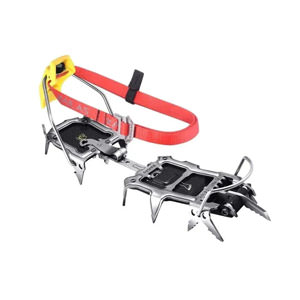
CRAMPONS
Crampons are one of the necessary pieces of equipment for ice climbing. Full-clip crampons can fix the crampons more firmly on the alpine boots (except half-clip alpine boots).
